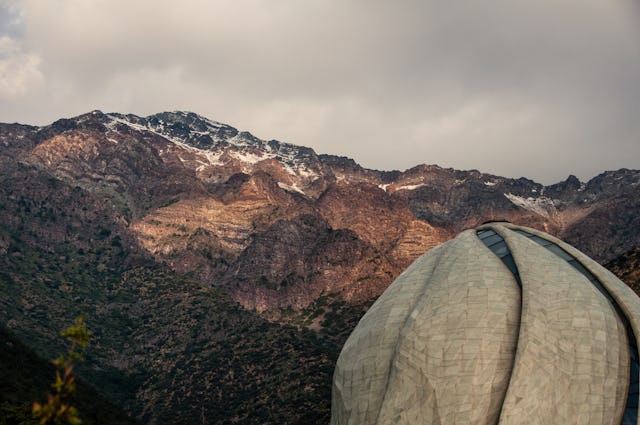South America Temple bridges two eras
SANTIAGO, Chile — On the edge of Santiago in the foothills of the Andes, the continental Baha’i House of Worship for South America has been illuminating the mountainside for over a year and a half. In that time it has attracted hundreds of thousands of visitors to its radiant edifice, which has received multiple prestigious architecture awards.
Since its dedication in October 2016, the Temple has been a recipient of an International Architecture Award as well as awards for structural artistry from the Institution of Structural Engineers, for innovation in architecture from the Royal Architectural Institute of Canada, for innovation from the American Institute of Architects, for design excellence from the Ontario Association of Architects, for “Best in Americas, Civil Buildings,” from World Architecture News, and for Architectural and Cultural design from American Architecture Prize.
But the Temple’s impact has been much more than that. It has also impacted the hearts and minds of the people in Santiago and beyond.
“People understand that the House of Worship is here to help with the spiritual development of our society,” explained Rocio Montoya, from the public affairs office of the Chilean Baha’i community.
“There are many families that are coming to the Temple. Religious groups come to pray together. Many people in their advanced years also come for hours and sit at the picnic tables and enjoy fellowship. People here see the House of Worship more and more as their Temple.”
The House of Worship has become a sanctuary for thousands upon thousands of visitors. They gather on its grounds each week to immerse themselves in the beauty of the natural landscape. They pray and meditate in the tranquil atmosphere of the central edifice. They participate in a range of uplifting conversations and activities oriented toward the betterment of the surrounding communities.
“Young people especially are finding that programs on the Temple grounds help them to gain a deeper and nobler sense of purpose,” said Jenny Perez, a representative of the Chilean Baha’i community. “They focus not only on their personal development, which is very important, but also on the development of their communities.”
Like other continental Baha’i Temples, the House of Worship for South America was an innovative architectural endeavor that had international scope. The project broke new ground in architecture and engineering, and it drew on the material support of the worldwide Baha’i community. Yet the more than decade-long project emerged at a time when Baha’i communities were also learning intensively about the spiritual and social development of neighborhoods and villages, and the construction process developed in parallel with community-building endeavors in the surrounding area.
“It is in the consciousness of the people,” said Ms. Perez. “They feel its impact. People are asking, why is this beautiful structure here? How did it come about? What is its purpose? How can we learn more?”
“People here see the House of Worship more and more as their Temple.”
—Rocio Montoya, Chilean Baha'i public affairs office
The award-winning House of Worship—the final continental Baha’i Temple—is a bridge between two eras. With its complex aerospace engineering technology, it embodies the architectural ingenuity and uniqueness of the Baha’i continental Temples. But like the Temples now rising for local and national communities, it has emerged in the midst of a vibrant community-building process.
The Temple has become a focal point for learning about the dynamic relationship between worship of God and service to humanity. The surrounding community has contributed to a native flora project on the land. The Temple hosts programs for the moral and spiritual empowerment of youth, who become committed to the progress of their communities. And on its grounds are numerous events, some held in collaboration with the municipality and some with local and national NGOs.
With the dedication of the local Baha’i House of Worship in Battambang, Cambodia, last year and several more local and national Temples planned for the coming years, Baha’i communities will be learning much more about how these structures, embedded in a locality, can be in harmony with the social and material environment and support the advancement of a population.
(Editor's note: A correction was made to the last paragraph.)

